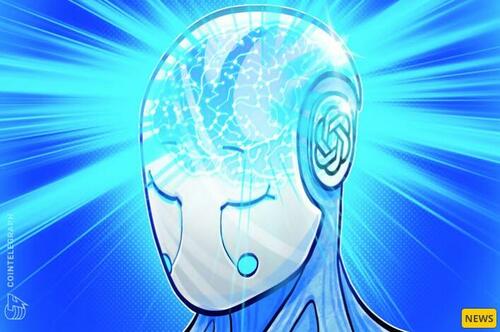
Humans and technology
Ben Sweet – Unsplash
A ginormous concern from the public is how will AI impact jobs. The combination of layoffs with the explosion of AI elevates these concerns. Technological advances are inevitable. We can’t stop the momentum, but we can potentially slow it down with regulations and the thoughtfulness of how we balance technology adoption and job preservation. With the speed of innovation and disruption, we need to pause to make sure we are in control of how tech impacts society. It is important to reflect on what our core values; taking into consideration both how we treat people, as well as how we stay competitive in a global market.
Industry disruption from technical advancements has been happening since the beginning of time. At the precipice of any major shift, there is always a fear attached to the impact on humans and the workforce. In Rania Hoteit’s Future of Work Article, she gave the example that Queen Elisabeth denied a patent for an automated knitting machine because of the fear that automating knitting would reduce employment to the point of starvation. Factories still adopted the machine and by the end of the 19th century, there were four times as many factory weavers as there had been in 1830.
With the Industrial Revolution, Britain feared that people would be replaced by machines and left permanently jobless. To date, these fears have been mostly wrong. However, in the short-term people were impacted. Those who were adaptable and quick to learn new technologies found themselves in better positions than others during transitional industry revolutions. To give some perspective to how fast the job market can change, A MIT study found that 60% of employment in 2018 was in roles that didn’t exist in 1940. With any industrial change new jobs arise. That is not to say that this wave of change will fit the pattern, but it is certainly worth considering.
Certainly, the integration of AI has not been without its challenges and negative impacts. One of the most significant concerns surrounding AI is the potential for job displacement, particularly in industries that rely heavily on repetitive or routine tasks that can be automated. As AI and machine learning become more sophisticated and capable of performing more complex tasks, there is a risk that more jobs will become obsolete, potentially leading to unemployment and economic disruption. There is no denying that technology is moving faster than ever before and there is the risk if humans can keep up with the technological evolution.
It is predicted by Goldman Sachs that 300 million jobs could be impacted. Although these numbers are alarming, the study showed that most jobs are only partially exposed to automation and have the possibility of being complementary and increasing workplace productivity. The most at-risk industries are “administrative support” estimated at 46% and “legal” estimated at 44%. The least at-risk roles will be within manual labor and hands-on jobs. The timeline of these estimates is unclear, but potentially within ten years.
As AI continues to advance and become more integrated into various industries, there have been many new job opportunities and other benefits resulting from its adoption. We will see that more mundane tasks will be delegated to AI and that humans will be needed for refining, quality checks, and more creative aspects of jobs. Jobs such as machine learning engineer, AI legal and ethics, data scientist, and AI researcher, require specialized skills and knowledge and are in high demand as more companies seek to develop and implement AI-driven solutions.
The question is how fast can people adapt to fill these roles. Having a core understanding of your innate abilities and how you can transfer your skills will be key to quick adaptability. Our society needs a workforce strategy that integrates AI and keeps jobs through modification of the roles. A combination of new job creation, reskilling programs, and AI-human collaboration would ensure a dynamic workforce, with humans and AI working together to maximize productivity and innovation.
Several experts believe that creatives will be less vulnerable to the forces of technology. The nonlinear, messiness of human emotion and thoughts that are conveyed through different artistic mediums very much exhibit uniquely human qualities. The biggest mistakes can at times end up being the best masterpieces. However, AI is also penetrating the creative space with applications such as image generators DALL-E 2. These applications won’t necessarily put talented creatives out of work, but more so will support humans to do the work they already perform with greater efficiency. There is the risk that a smaller group of established artists could dominate the market and leave less well-known artists with a smaller market share. On the other side of possibilities more artists will have access to technology and the global market to enhance their ability to sell and could even the playing field.
Jack Ma thinks that people will only work four hours a day and maybe four days a week, within the next 30 years…but getting there might be painful.
While the potential for job displacement is certainly a cause for concern, there are also potential solutions to address this issue. One such solution is the idea of universal basic income (UBI), which is a guaranteed income provided to every citizen regardless of their employment status. Proponents of UBI argue that it could serve as a safety net for workers who are displaced by automation and AI, allowing them to meet their basic needs while they seek new employment or pursue education and training opportunities. While UBI is still a controversial idea, there is growing interest and support for exploring it as a potential solution to job displacement caused by AI. It’s important to note, however, that UBI is not a silver bullet and there are still many questions and challenges that need to be addressed in implementing such a system. One of the important pieces to UBI is making sure that people connect to their passion and purpose to live meaningful and engaged lives.
Legal and governmental policies will be important factors to mediate and integrate AI into many aspects of our society, including the workforce. We will need a much more robust set of policy responses to make sure that workers can adapt, so that the benefits of automation are broadly shared. In a more balanced future, AI technology would coexist with humans, enhancing our capabilities and improving our lives, while carefully managing risks and challenges to ensure a fair and inclusive society.
According to the World Economic Forum Future of Jobs Report, 85 million jobs will be replaced by machines with AI by the year 2025. The same report states that 97 million new jobs will be created by 2025 due to AI. There is not an industry that may not be impacted in beneficial and/or detremential ways. Below is a list of potential replaceable tasks among some industries and a list of new jobs sparked from AI.
Potential replaceable tasks:
Personal Life
- Virtual assistants
- Smart home automation
- Fitness and wellness coaching
- Personal finance management
- Online dating and matchmaking
Manufacturing
- Quality control
- Predictive maintenance
- Process optimization
- Supply chain management
- Robotics and automation
Real Estate
- Property valuation
- Market analysis
- Virtual property tours
- Tenant screening
- Mortgage risk assessment
Gaming
- Game design and testing
- Al-driven characters
- Procedural content generation
- Player behavior analysis
- eSports coaching
Agriculture
- Precision farming
- Crop monitoring
- Pest detection
- Yield prediction
- Smart irrigation
Entertainment
- Content recommendations
- Virtual reality experiences
- Personalized advertising
- Social media monitoring
- Automated video editing
Healthcare
- Diagnosing diseases
- Personalized treatment plans
- Drug discovery
- Medical imaging analysis
- Virtual nursing assistants
Transportation
- Autonomous vehicles
- Traffic management
- Route optimization
- Logistics and delivery
- Drone navigation
Education
- Adaptive learning platforms
- Virtual tutors
- Learning analytics
- Plagiarism detection
- Career guidance
Finance
- Fraud detection
- Algorithmic trading
- Credit risk assessment
- Financial advising
- Portfolio management
Energy
- Smart grid management
- Demand response optimization
- Energy consumption forecasting
- Renewable energy integration
- Predictive maintenance of power
Human Resources
- Candidate screening
- Talent acquisition
- Performance analysis
- Employee engagement
- Training and development
Retail
- Inventory management
- Demand forecasting
- Price optimization
- Customer service chatbots
- Personalized recommendations
Real Environment
- Climate modeling
- Pollution tracking
- Wildlife monitoring
- Ecosystem management
- Natural resource optimization
Legal
- Contract analysis
- Legal document review
- Case outcome prediction
- Intellectual property management
- Automated legal research
Space Exploration
- Autonomous spacecraft
- Planetary rover navigation
- Mission planning and optimization
- Astronomical data analvsis
- Satellite maintenance
Public Safety
- Surveillance and security
- Disaster management
- Emergency response
- Crowd control
- Crime prediction
Art and Design
- Generative art
- Architectural design
- Music composition
- Virtual fashion design
- Creative writing assistance
Journalism
- Automated news writing
- Fact-checking
- Sentiment analysis
- Trend prediction
- Social media analysis
Customer Support
- Chatbots and virtual assistants
- Sentiment analysis
- Ticket routing and prioritization
- Knowledge management
- Support analytics
New Jobs:
Data Science and AI Engineering: The growing demand for people who can develop, deploy, and maintain AI models and systems.
Cybersecurity: As AI technologies become more sophisticated, the need for professionals specializing in cybersecurity to ensure that AI systems are secure, transparent, and unbiased, protecting user privacy and preventing unintended consequences.
AI Ethics: Oversees the policies for ensuring that AI is used in a safe and ethical manner.
AI-Enabled Creative Roles: Combine human creativity with AI capabilities, like AI-assisted designers or content strategists in areas such as advertising, graphic design, and video production.
Healthcare and AI Diagnostics: AI-driven diagnostics and personalized medicine are creating new opportunities for medical professionals who can interpret AI-generated insights and make informed decisions for patient care. This includes new medical developments, individualized patient care and securly collecting data to be able to run more effective diagnosis and treatment plans.
AI-Supported Education: Integrating AI in education such as AI-assisted curriculum designers and personalized learning facilitators, who work closely with AI systems to create tailored learning experiences for students.
AI Collaboration Specialists: As AI systems become more prevalent, professionals who can manage and optimize the collaboration between humans and AI in the workplace will be in high demand. These experts help design workflows and processes that maximize productivity and efficiency while ensuring job satisfaction.
Machine Managers: Training actual machines to work in accordance with AI software.
AI for Sustainability and Climate Change: The growing need to combat climate change and promote sustainable practices has led to new roles focused on leveraging AI for environmental monitoring, climate modeling, and resource management.
AI-Enabled Supply Chain Management: AI is transforming supply chain management by improving efficiency and reducing waste. New roles are emerging for professionals who can manage and analyze AI-generated insights to optimize supply chain operations.
AI in Customer Service: Managing AI-driven systems to deliver a seamless and personalized customer experience.
AI Policy and Regulation: As AI adoption increases, governments and organizations will need experts in AI policy and regulation to ensure compliance with ethical standards, transparency, and privacy protection.
Prompt Engineer: Someone who can create the correct text to generate the exact results needed with LLM’s (large language models) such as ChatGPT. These positions can be used in places such as marketing, law firms, customer service, nonprofit fundraising, and publishing.
AI Auditor: Managing AI-driven systems to make sure they are being used legally correctly, unbiased, and accurate.
To learn more about the benefits and downfalls, and disruption of AI, follow this article series which will include:
AI Past, Present, And Future
The Impacts Of AI On The Workforce
The Future Of Education – Disruption Caused By AI And Language Learning Models Like ChatGPT
AI Regulation, Why Experts Are Calling For Slowing Down AI
The Future Of AI: Dystopian And Utopian Projections



